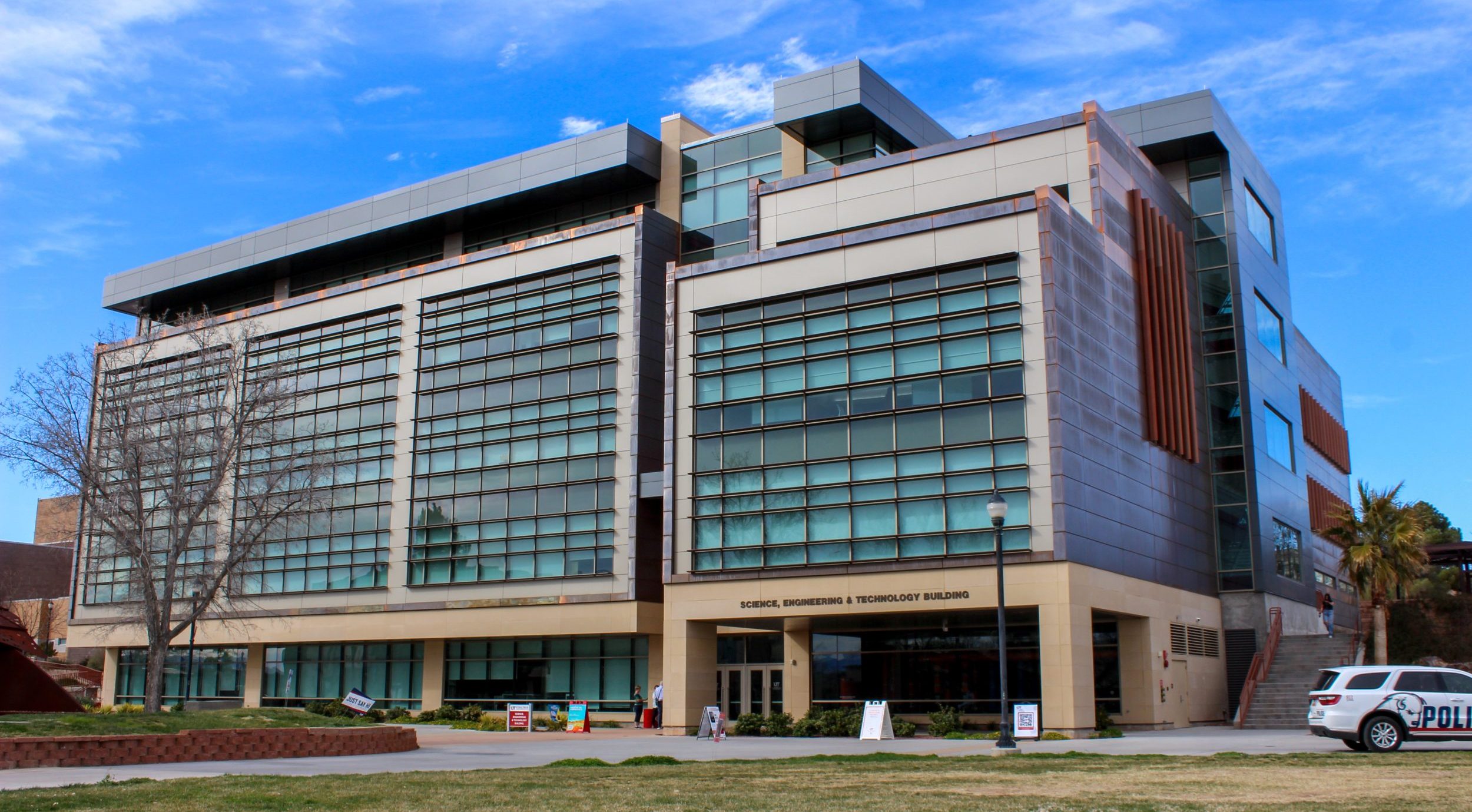The Science, Engineering and Technology building is receiving an update after the copper paneling on the outside of the building has failed to hold together.
Eric Pedersen, dean for the College of Science, Engineering and Technology, said the copper was a fun feature, but then issues started occurring.
The copper panels on the SET building will be replaced by the start of school next fall. The panels are not very thick and some have fallen off the building. Bigger panels like this can be a hazardous issue for students walking past the building.
Sherry Ruesch, assistant vice president of facilities management, said the panels were delaminating and the outer layer was pulling away from the backing.
The copper that is currently on the building is adhered to an inner sheet that is another type of metal, which is now separating from one another.
The copper panels are under warranty, so the school or state won’t have to pay for them. The manufacturer and installer will be paying for it.
Ruesch said the facility chose the copper because they were trying to choose a product that was “of the desert,” meaning desert colors, which is why Utah Tech has the copper panels. The copper was suggested by the architect.
The building was initially designed with copper-colored panels with real copper as an alternative. The contractor was asked to give a price for real copper instead of the copper-colored panels.
Ruesch said the copper-colored panels were more expensive but were the basis of a design by the architect. Since it was within budget, real copper became the choice.
The copper coloring will be used on other buildings around campus. The classroom building behind the facilities management building will have it, as well as the M.K. Cox Performing Arts Center. It will be an additional campus standard within the next couple of years.
Paul Morris, vice president of administrative affairs, said the best-case scenario of installing the new panels would be in about six months. He said it should take about three months for the company to produce the new panels and another three months to install the panels.
Morris said, “We actually took a trip to Gallup, New Mexico to look at another building with a copper panel on it that was manufactured by another group to see if it would work for us.”
He said a trip was taken to Gallup because they felt it was most similar to the climate in St. George.
The copper paneling in Gallup was not delaminating but it did turn a very dark, almost charcoal color, Morris said. It did not look like a tarnished copper coloring.
Morris said another thing was the SET building has staircases that separate the copper. He said if they had put in this copper and it turned dark like in Gallup, then it would give the building a charcoal-colored appearance.
It was decided to go with a man-made product, a composite aluminum material that would replace the copper. This product and similar ones have been used on buildings such as the Holland Centennial Commons. Zero problems have been reported with this material.
“We were excited about copper as it oxidizes and it goes, kind of multiple colors,” Morris said. “It can go into greens and it can go into lighter browns and has a nice look to it, and we were excited about that.”
But copper doesn’t oxidize consistently from climate to climate, leading Morris to wonder if our hot, dry and sunny climate ran the copper down.
Pedersen said they looked at many options for the paneling and that they may have gotten a specific copper that is not holding up.
There will be no other changes made to the SET building. The focus right now is to fix the copper panels and replace them with copper-colored aluminum.


